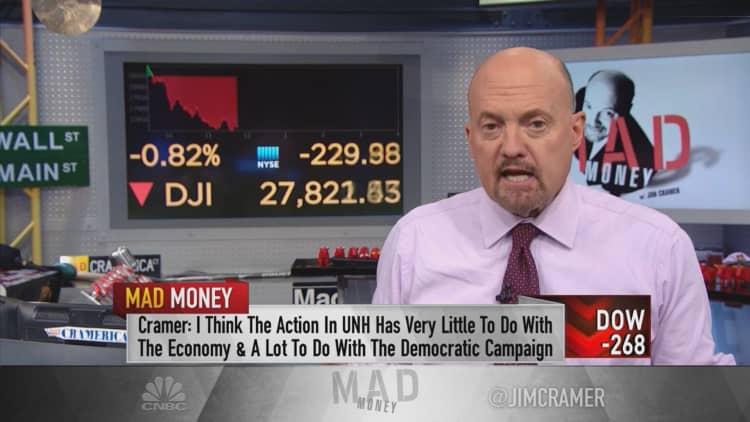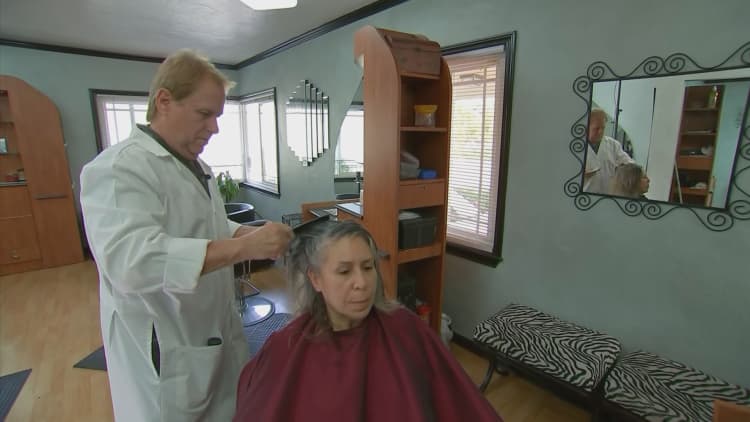Medicare beneficiaries would see expanded benefits, including dental and vision coverage, if the Senate passes a bill that cleared the House on Thursday.
The measure, H.R. 3 — which funds the changes by giving the government the right to negotiate lower prices with drugmakers — would provide dental, vision and hearing coverage through original Medicare. It also would limit a beneficiary's out-of-pocket yearly spending on prescriptions to $2,000, broaden access to Medicare supplement insurance (also known as Medigap) and expand the low-income subsidy program that helps with drug costs.

The bill passed by a vote of 230 to 192, with Democrat support and Republican opposition (except two Republicans who voted for the measure). While it's unlikely that the GOP-controlled Senate will take it up, advocates of the bill are hopeful that it moves the needle on how lawmakers approach any changes to Medicare, which is the primary health insurance for most Americans age 65 or older.
"Our hope is that it becomes a marker for the direction we should go in," said David Lipschutz, associate director at the Center for Medicare Advocacy. "It significantly reduces drug costs and expands benefits for Medicare, all derived from lower prescription drug costs."
Roughly 10,000 baby boomers turn 65 each day, making them eligible to sign up for Medicare. While the program's 61 million beneficiaries can access dental, vision and hearing benefits through supplemental options such as Advantage plans or standalone insurance policies, original Medicare — Part A hospital coverage and Part B outpatient coverage — excludes those services except in limited circumstances.
Some Advantage plans now include comprehensive dental coverage as part of the plan or as an optional supplemental benefit, said Elizabeth Gavino, founder of Lewin & Gavino in New York and an independent broker and general agent for Medicare plans.
However, those benefits also might be limited to the carrier's dental network or require prior authorization that the treatment is medically necessary, Gavino said.

H.R. 3 would add preventive and screening dental services to Part B benefits beginning in 2025, including oral exams and cleanings, and beneficiaries would chip in the standard 20%. It would also cover basic procedures such as tooth restorations and extractions at that same rate. Major treatments — bridges, crowns and root canals — would start out with beneficiaries paying for 90% of the cost, a share that would drop to 50% over several years. Dentures also would be covered through Part B, within limits.
Routine eye exams would become standard through Part B, as well, with beneficiaries generally paying 20% of the cost. It also would provide some coverage — $85 — toward contact lenses or eye glasses.
Hearing exams and hearing aids also would be covered under Part B, with beneficiaries contributing 20%.
More from Personal Finance:
What consumers most want in 2020: a debt-free life
Here's when newlyweds will face a 'marriage tax penalty'
How these multimillionaires are avoiding a 40% tax hit
The bill's changes to Medigap include creating a one-time enrollment opportunity for Medicare beneficiaries who otherwise wouldn't qualify for guaranteed coverage and allowing a person to pick up a Medigap policy after dropping an Advantage plan.
The nonpartisan Congressional Budget Office estimates that the provisions providing dental, vision and hearing coverage would cost about $358 billion — which would be covered by the estimated $456 billion in savings due to negotiated drug prices.

Overall, although H.R. 3 would increase direct spending by about $40 billion from 2020 through 2029, that would be offset by $46 billion in increased revenue, according to the estimate.
In 2018, Medicare spent about $740 billion on 59.9 million beneficiaries through its hospital, outpatient care and prescription drug benefits, according to the latest report from the program's trustees.
Total Medicare costs are expected to rise to 5.9% of gross domestic product by 2038, up from 3.7% in 2018, the report says. The trust fund for Part A (hospital coverage) is anticipated to be depleted unless Congress acts before then. At that point, the program would be able to fund 89% of promised Part A benefits, the trustees report says.


